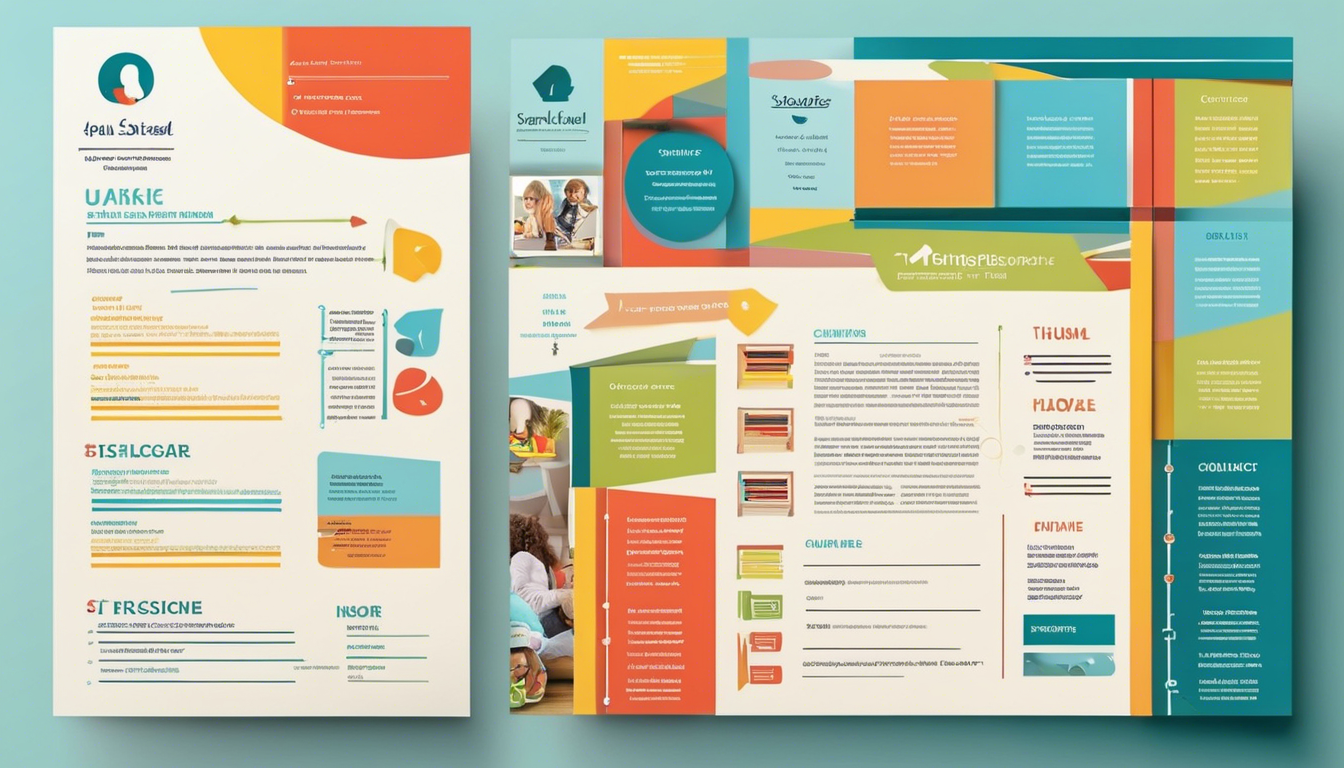Understanding the Chronological Resume Format
The chronological resume format is one of the most widely used and preferred styles by hiring managers. It involves listing your employment history and education in reverse chronological order, starting with the most recent experience. This format allows recruiters to easily see your career progression and assess your suitability for a particular role.
Compared to other resume formats, such as functional resumes that focus on skills and qualifications, the chronological format showcases your continuous experience and demonstrates your commitment to a particular field. It is especially effective if you have years of relevant work experience in a specific industry.
Structure of a Chronological Resume
To effectively use the chronological resume format, it is important to follow a structured framework. Here are the key sections that should be included in your resume:
Header and Contact Information
Start your resume with a header that includes your name, contact details, and professional title. Make sure to use a clear and professional font, and include your phone number, email address, and relevant social media profiles.
Summary/Profile Section
Following the header, include a brief summary or profile section that highlights your key qualifications and career objectives. This section should provide a snapshot of your skills, experience, and goals, and entice the recruiter to continue reading.
Employment History
The employment history section is the most important part of a chronological resume. List your previous employers in reverse chronological order, starting with your most recent position. For each job, include the company name, job title, dates of employment, and a brief description of your responsibilities and achievements.
Education
After the employment history section, include your educational background. List your highest level of education first, including the degree earned, institution name, and dates of attendance. If you have relevant certifications or licenses, include them in this section as well.
Skills
In the skills section, highlight your key competencies that are relevant to the job you are applying for. Include both hard skills (e.g., programming languages, project management) and soft skills (e.g., communication, leadership). Be selective and focus on skills that are directly related to the position.
Optional Sections
Depending on your individual circumstances and the requirements of the job, you may include additional sections such as volunteer experience, professional affiliations, or language proficiency. Only include information that adds value and is relevant to the role you are applying for.
Writing the Employment History and Education Sections
When writing the employment history and education sections, it is important to provide clear and concise information. Use bullet points to highlight your responsibilities and achievements, and focus on quantifiable results whenever possible. Here are some additional tips to make these sections impactful:
Using Strong Action Verbs
Start each bullet point with a strong action verb to describe your accomplishments and showcase your skills. For example, instead of saying "Responsible for managing a team," you could say "Led a team of 10 employees to exceed sales targets by 20%."
Including Relevant Achievements
Rather than simply listing your job responsibilities, emphasize your achievements and contributions in each role. Quantify your accomplishments and provide specific examples of how you added value to the organization. This will help recruiters see the impact you have made in previous positions.
Advantages and Disadvantages of the Chronological Resume Format
Like any resume format, the chronological format has its own advantages and disadvantages. Understanding these can help you determine if it is the right choice for you.
Advantages of the Chronological Resume Format
- Familiarity to recruiters: Hiring managers are accustomed to reviewing chronological resumes, which makes it easier for them to quickly assess your qualifications.
- Easy writing process: Since you are listing your experiences in reverse chronological order, it is a straightforward process to document your work history.
- Demonstration of contributions: The chronological format allows you to showcase your contributions and achievements in previous roles, highlighting your value to potential employers.
- Showcasing career progression: This format emphasizes your career growth and development, which can be particularly beneficial if you have steadily climbed the career ladder.
Disadvantages of the Chronological Resume Format
- Revealing employment gaps: If you have gaps in your employment history, the chronological format may make these more noticeable. However, these can often be addressed in the cover letter or during the interview.
- Job hopping: If you have a history of frequently changing jobs, the chronological format may emphasize this. However, if you can demonstrate the valuable skills and experiences gained from each position, it can still be advantageous.
Tips for Creating an Effective Chronological Resume
To create an effective chronological resume, consider the following tips:
Assessing if the Chronological Format is Right for Your Experience
Evaluate if the chronological format aligns with your work history and career goals. If you have a consistent and progressive employment history, this format is likely to work well for you. However, if you have limited work experience or have changed careers frequently, you may want to explore other resume formats.
Following the Structure and Format Guidelines
Adhere to the structure and format guidelines outlined earlier in this article. This will ensure consistency and make it easier for recruiters to navigate your resume.
Using Formatting Tips to Make the Resume Visually Balanced
Use appropriate font sizes and styles to create a visually balanced resume. Use bullet points for easy readability and ensure that your resume is well-organized and spaced out. Consider using bold or italicized text sparingly to emphasize key information.
In conclusion, the chronological resume format is a popular and effective choice for job seekers with a solid work history. By following the structure and writing tips provided in this article, you can create an impactful resume that showcases your career progression and highlights your qualifications and achievements. Assess whether the chronological format is appropriate for your experience, and remember to tailor your resume to suit the specific role you are applying for. With practice and attention to detail, you can create a compelling chronological resume that will impress potential employers.
Build Your Resume With TalenCat CV Maker
If you want to build a professional resume, TalenCat CV Maker is the best option for you. With TalenCat CV Maker's intuitive resume editor, you can use the various resume templates to make your resume look better, and easily build your resume in minutes.
Also, if you have some trouble writing content, its AI generator can be very helpful for you.
Step 1. Log in to TalenCat CV Maker, and click the "+ Create Resume" button in the top right corner to create a new resume.

Step 2. Then you need to name this resume and click the "Create" or "Create with Example" button.

- Create: You can start your creation with a completely blank resume, you need to fill in everything for your resume.
- Create with Example: You can start resume creating with a ready-to-use resume, you can change any content if it doesn't match you.
Step 3. You will get into a reactive CV editor, you can fill in your detailed information, and any content you enter will be immediately displayed in the right panel to let you have an overview of your resume.

Once you get your resume creation or editing done, you can easily export it as a PDF file or picture.
Also, you can turn on the "online share" feature to get an online link of your resume, then you can easily share your resume with others using this link.

Conclusion
In conclusion, creating an effective chronological resume is a crucial step in presenting your qualifications and experience to potential employers. The chronological format provides a clear and structured way to showcase your career progression, achievements, and skills. By following the guidelines outlined in this article, such as using strong action verbs, highlighting quantifiable results, and maintaining a visually balanced layout, you can craft a compelling resume that sets you apart from other candidates.
Remember, a well-crafted chronological resume is not only a representation of your professional journey but also a tool to effectively communicate your value proposition to hiring managers. With the right approach and attention to detail, your chronological resume can open doors to exciting new career opportunities.
Lastly, TalenCat CV Maker can streamline the resume-building process, providing user-friendly templates and AI-powered content generation to help you create a polished and professional document.
By leveraging these resources, you can confidently present your qualifications and increase your chances of securing your dream job.




